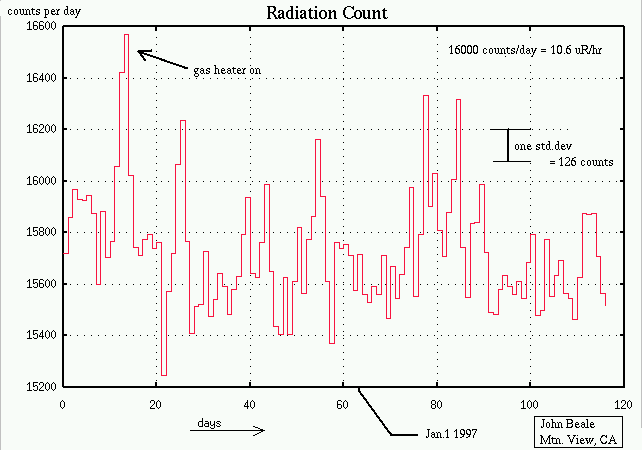
I've always been curious about geiger counters, and last year I got a computer-interfaceable Geiger Counter from Aware Electronics, model RM-60 (more details). The calibration on this particular model indicates that counts per minute (CPM) is nearly equal to microrem per hour: (CPM * 0.95) = uR/Hr.
I connected the counter to an old '386 PC that a friend gave me (thanks Richard!) and left it running in a corner of my apartment. When I made the plot below, it had been running continuously for about four months. If you look at the radiation count for a short time period (minutes to hours), the random variation masks any trends, since the counter only counts about 11 times per minute and, in radiation counting, the standard deviation of your data is the square root of the count, so the more counts, the better. Averaging over four-hour periods, or as in this graph, days, shows definite peaks.
These peaks (mostly) correspond to cold days when the gas room heater went on. Natural gas contains radon. The greatest increase is only 5% above background, so it's not a hazard, but it's interesting that you can measure it. In the last 20 days of the chart, the heater has been turned off, so peaks there must have some other explanation (eg. random noise).
Here is a PDF plot showing a diurnal variation in radiation, based on 47 days in July-Aug 2007.
Back to John's homepage.